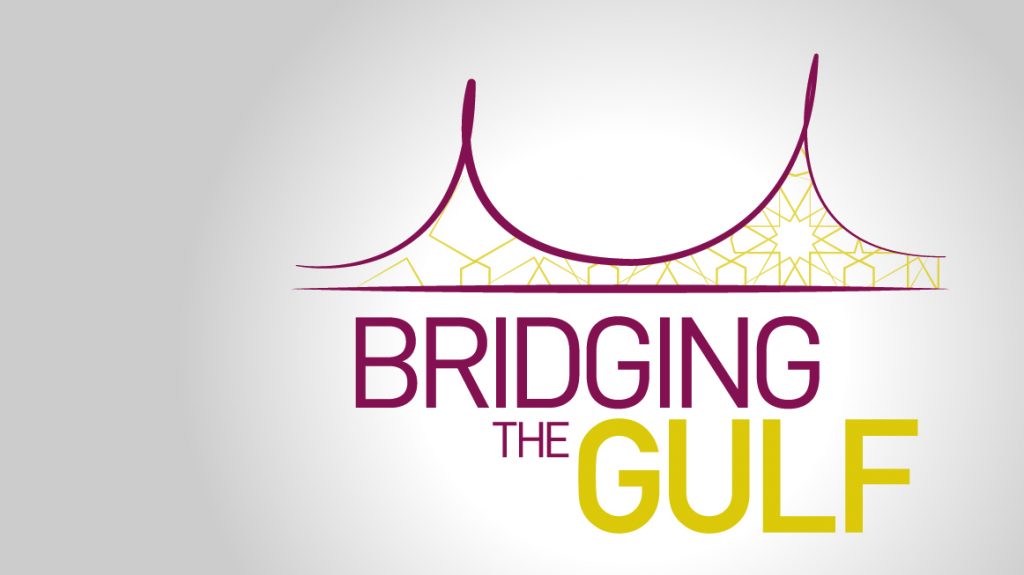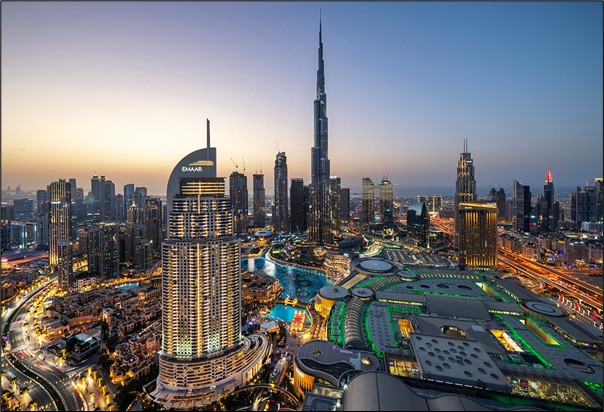Did you know that the Hawk of Quraysh is a symbol featured in numerous emblems, coat of arms and flags of various Arab states? In the recorded history about the Quraysh, a mercantile tribe that inhabited the city of Mecca, claims have been made about the falcon as their clan symbol. Falconry, once at the heart of Arabian desert life, has undergone transformations due to rapid urbanisation in the Gulf. Yet, the bird of prey remains an integral part of Arabian culture.
The Middle East Institute, along with the UAE Embassy in Singapore, welcomes the CEO of Hamdan bin Mohammed Heritage Centre to share his knowledge about the tradition and sport of falconry.
Speaker: Mr Abdullah Hamdan bin Dalmook, CEO, Hamdan bin Mohammed Heritage Centre

After majoring in political science and completing his studies in the US, Mr Abdullah Hamdan Bin Dalmook began his career by working for the UAE’s Ministry of Interior. Later he was assigned to manage the heritage and the diving villages in Dubai’s Shindagha area and was appointed as its director in 1997. In 2005, he was appointed as the executive director of the championships office of his highness the crown prince of Dubai. In 2013, his highness the crown prince of Dubai issued a decree to establish the Hamdan Bin Mohammed Heritage Centre and Mr Dalmook was appointed as the chief executive officer of it. In 2017, the center’s organisational body was restructured but Mr Dalmook still remains as its Chief Executive Officer to date.
Mr Dalmook is an expert in the UAE’s heritage, with an accreditation granted to him by the council of ministers. He was the chairperson of many committees implementing official festivals and supervising many traditional television programmes belonging to his highness the crown prince of Dubai at the Dubai Media Incorporated.
Listen to the full event here:
Watch the full event here:
A summary of Session 8’s proceedings can be found below.
Bridging the Gulf Episode 8 — MEI Salon Cultural Segment I: The Tradition and Sport of Falconry
By Fauzan Roslee, Research Associate, Middle East Institute, National University of Singapore
The cultural segment of MEI’s Bridging the Gulf series began with an insight into the tradition and sport of falconry. Dr Clemens Chay, the series moderator, opened the session by highlighting how falcons have been long associated with Arab culture. In the early Islamic dynasties under the Umayyad caliphs, for example, historical records show that there have been special living areas for falcons. In particular, due to the Bedouin element of Arab culture, it is unsurprising that falcons have been spotted in the deserts of Northern Arabia for hunting in the summer each year. At the same time, the Gulf region remains a transit point for falcons migrating from Central Asia and Eastern Europe to Africa. In October 2020, a peregrine falcon was sold in an auction in Saudi Arabia for more than USD170,000, which goes to show that this tradition, hobby and social element remains more alive than ever.
Following that, Mr Abdullah Hamdan Bin Dalmook of the Hamdan Bin Muhammad Heritage Centre (HHC) introduced the tradition and sport of falconry through two videos produced by the centre. He then proceeded to elaborate on the falconry as a tradition that is practised in the Gulf. While there are many types and species of falcons, falconry as practised around the world – not necessarily just among the Arabs – typically relates to the peregrine falcon which is popularly used for hunting. The peregrine falcon is also known for its speed and intelligence, which are useful traits for hunting other animals without the need for its owners to use rifles or other hunting weapons.
Mr Abdullah also explained that falcons are usually only used for hunting during the winter season as they tend to shed their feathers in the summer, causing them to be unable to hunt effectively. Falcons are also known to hunt live animals and not dead ones.
Beyond that, the falcon holds a significant position in Arabian culture, identity and society such that it is represented in the emblem of the UAE, as well as in the emblem of other governmental departments. Mr Abdullah further explained that the love for falcons among Arabs stems from the strong traits that are demonstrated by the animal. Additionally, falcons are also known to be loyal to their owners when they are trained and treated well. Mr Abdullah shared his own experience of hunting with a well-trained falcon that did not feed on its prey until it is given the permission to do so. Falcons are also known to be very independent birds and prefer hunting for their food than being fed like other domesticated animals. These traits have made falcons very appealing to the Arabs for a very long time now.
Highlights from the Q&A session
Q: Why are the claws of the falcon “chained” and does that mean it is domesticated?
A: Mr Abdullah clarified that the reason for the falcon’s claws being bound with a band (called El Sabag) is because when it hunts a prey, the owner would be able to safely retrieve the falcon by lifting it from the band and avoid getting pierced by its claws. At the same time, if the band is removed, the falcon would know that it is actually free and will fly away for good. Mr Abdullah maintained that the falcon on display was once a wild falcon but is now a domesticated one and has a chip installed on its back to track its movements when it is released for hunting. In any case, falcons are still wild birds and are not like other domesticated birds that respond to the call of their owners.
Q: Why do you cover the falcon’s eyes with a hood (called Al-Burgaa)?
A: Mr Abdullah explained that the hood covering the falcon’s eyes keeps it calm and quiet, since falcons are known to keep track of everything that moves. This is also related to the fact that the Arabs understand that no one can truly own a falcon since it is a wild bird. Thus, the hood makes it easier for the owner to take care of the falcon without the need to keep it in a cage like other domesticated birds.
Q: What are the main reasons and factors behind the selling prices of falcons?
A: Mr Abdullah outlined that first and foremost, the factor that determines the price of falcons is its body size. According to him, the ideal body width for a falcon is between 18 to 22 centimetres. A perfect falcon would have a proportionate or equal body width and length. Another factor is a falcon’s speed, which is determined by the strength and proportion of its feathers. Beyond that, some falcons are able to see over longer distances than others, which may also be a determining factor in falcon prices.
Q: When you capture the falcon in the wild and bring it back, what is the training programme like?
A: Mr Abdullah describes that a newly-captured wild falcon will be taken indoors (typically in the majlis) to familiarise it with human speech and interaction. Additionally, a radio will also be constantly played next to the falcon to make it recognise human speech. Then, the falcon’s claws are bound with a band (El Sabag) before it is trained to hunt and respond to its owner’s voice. At the same time, the falcon is also trained to safely perch on its owner’s arms. Gradually, the falcon is trained to hunt outdoors in the wild by tying a rope of varying lengths to its El Sabag to allow it to fly around without really leaving its owner.
Q: Are there any changes in the falcon’s routine or diet during different seasons?
A: Mr Abdullah says that in the summer, during which the falcons shed their old feathers, the owners will typically feed them snakes to enhance the time needed for the feathers to change. The falcons are also given more, or less food during the summer according to their health and size to prime them for the hunting season in winter.
Q: What is the expected price for falcons?
A: Mr Abdullah explained that it is hard to put a price on falcons because it is not really possible to quantify its value. While the champions of falconry competitions are awarded with grand prizes (like a Range Rover), that does not necessarily reflect the value and price of a falcon itself. However, it is not uncommon for the prices of falcons to reach hundreds of thousands or millions of dollars, which demonstrate the cultural pride of the Arabs towards the art of falconry.
Q: Does having a falcon also mean having a social status in the Emirates?
A: Mr Abdullah maintains that falconry is usually practised by people who have the time and means for it and hence, it is not necessarily for everyone. For example, a doctor who works at the hospital might not have the time to take up falconry due to the nature of his work. However, falconry is still a very important part of Emirati tradition, culture and identity. Additionally, in the past, falcons used to hunt food for their owners’ households. This meant that women had also taken part in falconry. Today, however, falconry is seen as a male-dominated sport as households do not rely on falcons for food anymore.
Q: What are the types of activities and programmes to keep the younger generation interested in this tradition?
A: Mr Abdullah outlined that since 2001, Sheikh Hamdan had actually organised the first falconry competition in the Gulf, which still remains the most important falconry event in the region today. Despite the Covid-19 pandemic, the competition will still be held to ensure that the younger generation remain interested in the sport and tradition. The falconry competition has also been held in other Gulf cities and countries like Abu Dhabi, Sharjah, Qatar, Bahrain and Kuwait.
Mr Abdullah also expressed his hopes and aspirations for the younger generation to continue the tradition through their participation in such competitions. For example, the recent competition in the Emirates has actually attracted 2,800 participants. Additionally, there is an Under-14 category in the competition for youngsters to compete and foster their interest in the sport. Mr Abdullah also expressed his amazement at the knowledge that the younger generation has about falcons which they acquired through technology – some were even able to effectively train their falcons to be used either solely for hunting or competitions by leveraging on technology.





